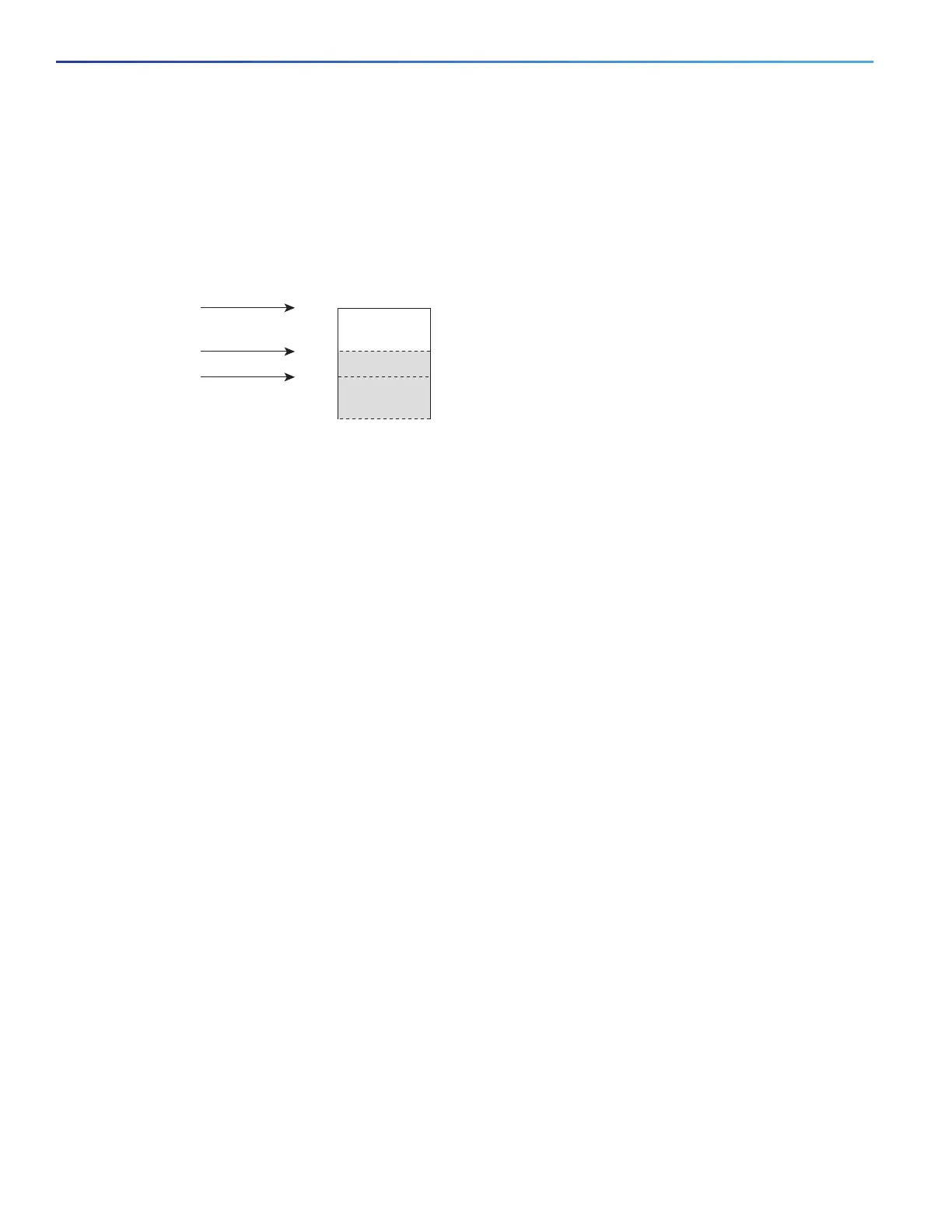598
Configuring QoS
QoS Treatment for Performance-Monitoring Protocols
Figure 82 on page 598 shows an example of WTD operating on a queue of 1000 frames. Three drop percentages are
configured: 40 percent (400 frames), 60 percent (600 frames), and 100 percent (1000 frames). These percentages mean
that traffic reclassified to the 40-percent threshold is dropped when the queue depth exceeds 400 frames, traffic
reclassified to 60 percent is dropped when the queue depth exceeds 600 frames, and traffic up to 400 frames can be
queued at the 40-percent threshold, up to 600 frames at the 60-percent threshold, and up to 1000 frames at the
100-percent threshold.
Figure 82 WTD and Queue Operation
In this example, CoS values 6 and 7 have a greater importance than the other CoS values, and they are assigned to the
100-percent drop threshold (queue-full state). CoS values 4 and 5 are assigned to the 60-percent threshold, and CoS
values 0 to 3 are assigned to the 40-percent threshold.
If the queue is already filled with 600 frames, and a new frame arrives containing CoS values 4 and 5, the frame is
subjected to the 60-percent threshold. When this frame is added to the queue, the threshold would be exceeded, so the
switch drops it.
WTD is configured by using the queue-limit policy-map class command. The command adjusts the queue size (buffer
size) associated with a particular class of traffic. You specify the threshold as the number of packets, where each packet
is a fixed unit of 256 bytes. You can specify different queue sizes for different classes of traffic (CoS, DSCP, precedence,
or QoS group) in the same queue. Setting a queue limit establishes a drop threshold for the associated traffic when
congestion occurs.
Note: You cannot configure queue size by using the queue-limit policy map class command without first configuring a
scheduling action (bandwidth, shape average, or priority). The only exception to this is when you configure queue-limit
for the class-default of an output policy map.
The switch supports up to three unique queue-limit configurations across all output policy maps. Within an output policy
map, only four queues (classes) are allowed, including the class default. Each queue has three thresholds defined. Only
three unique threshold value configurations are allowed on the switch. However, multiple policy maps can share the same
queue-limits. When two policy maps a share queue-limit configuration, all threshold values must be the same for all the
classes in both policy maps.
For more information, see Configuring Output Policy Maps with Class-Based-Weighted-Queuing, page 630.
This example configures class A to match DSCP values and a policy map, PM1. The DSCP values of 30 and 50 are
mapped to unique thresholds (32 and 64, respectively). The DSCP values of 40 and 60 are mapped to the maximum
threshold of 112 packets.
Switch(config)# class-map match-any classA
Switch(config-cmap)# match ip dscp 30 40 50 60
Switch(config-cmap)# exit
Switch(config)# policy-map PM1
Switch(config-pmap)# class classA
Switch(config-pmap-c)# bandwidth percent 50
Switch(config-pmap-c)# queue-limit 112
Switch(config-pmap-c)# queue-limit dscp 30 32
Switch(config-pmap-c)# queue-limit dscp 50 64
Switch(config-pmap-c)# exit
Switch(config-pmap)# exit
Switch(config)# interface gigabitethernet 0/1
Switch(config-if)# service-policy output PM1
CoS 6-7
100%
60%
40%
1000
600
400
0
CoS 4-5
CoS 0-3
86692

